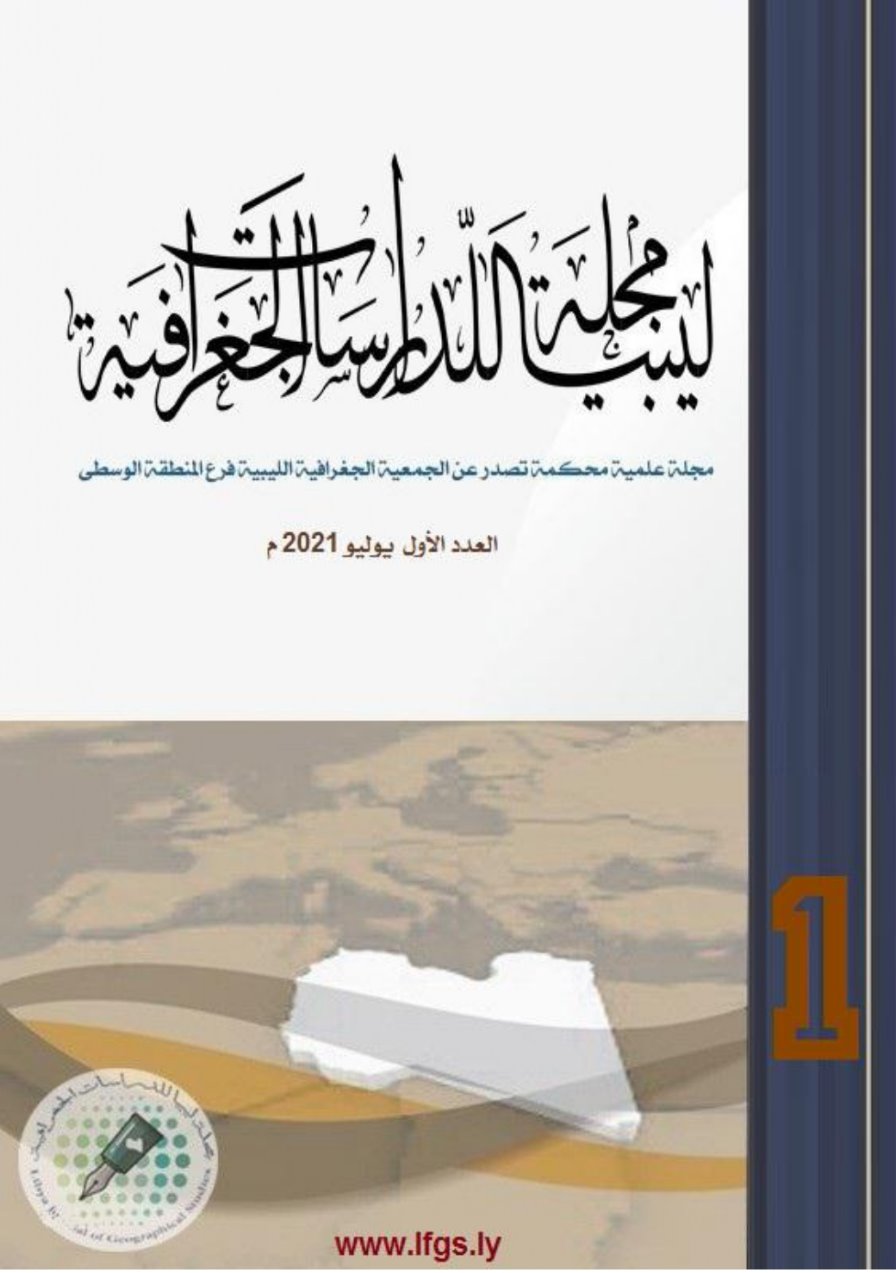تأثير تذبذب القطب الشمالي (AO )على تباين متوسط درجات حرار ة فصل الشتاء في ليبيا
DOI:
https://doi.org/10.37375/jlgs.v1i1.1717الكلمات المفتاحية:
تذبذب القطب الشمالي، AO، فصل الشتاء، ليبياالملخص
يؤثر تذبذب القطب الشمالي AO على مناخ نصف الكرة الشمالي، فقد أوضحت العديد من الدراسات السابقة تأثير تذبذب القطب الشمالي AO على ظروف المناخ في فصل الشتاء في أمريكا وأوروبا وآسيا ومنطقة حوض البحر المتوسط؛ لذلك تحاول هذه الدراسة التحقق من تأثير تذبذب القطب الشمالي AO على متوسط درجة الحرارة، وكذلك متوسط درجة الحرارة العظمى والصغرى لفصل الشتاء في ليبيا (ديسمبر – يناير – فبراير) من خلال تحليل الارتباط لـ 11 محطة على مدى 50 سنة (1961- 2010) واختباره إحصائياً. وتبين من خلال النتائج وجود ارتباطاً سلبياً بين درجة حرارة أشهر الشتاء وتذبذب القطب الشمالي AO وجميع متوسطات درجات الحرارة لأشهر فصل الشتاء في كافة محطات الدراسة، كما توصلت الدراسة إلى أن متوسط درجة حرارة شهر يناير أقل ارتباطاً بمؤشرAO من شهري ديسمبر وفبراير. وتشير النتائج أيضاً إلى وجود تباين مكاني واضح ذي دلالة إحصائية مهمة P-value أقل من (0.05) بين ارتباط مؤشر AO ومتوسطات درجة حرارة الشتاء في غرب وشرق وجنوب البلاد. ومن بين النتائج أيضاً أن قيم AO بدأت في الانخفاض التدريجي الواضح بداية من سنة 1991-2010 في جميع الأشهر الشتوية (ديسمبر- يناير- فبراير). مما أدَّى إلى ميل متوسط درجة حرارة الشتاء إلى الارتفاع، وذلك بناء على العلاقة العكسية للارتباط.
المراجع
Ando, Y., Ogi, M., & Tachibana, Y. (2015). Abnormal winter weather in Japan during 2012 controlled by large-scale atmospheric and small-scale oceanic phenomena. Monthly weather review, 143(1), 54-63.
Báez, J. C., Gimeno, L., Gómez-Gesteira, M., Ferri-Yáñez, F., & Real, R. (2013). Combined effects of the North Atlantic Oscillation and the Arctic Oscillation on sea surface temperature in the Alborán Sea. PLoS One, 8(4), e62201.
Ghanghermeh, A., Roshan, G., & Al-Yahyai, S. (2015). The influence of Atlantic-Eurasian teleconnection patterns on temperature regimes in South Caspian Sea coastal areas: a study of Golestan Province, North Iran. Pollution, 1(1), 67-83.
Ghasemi, A. R., & Khalili, D. (2006). The influence of the Arctic Oscillation on winter temperatures in Iran. Theoretical and Applied Climatology, 85(3), 149-164.
Kakade, S., & Kulkarni, A. (2017). Association between arctic circulation and Indian summer monsoon rainfall. Journal of Climatology and Weather Forecasting, 5(207), 1-5.
Mao, R., Gong, D. Y., Yang, J., & Bao, J. D. (2011). Linkage between the Arctic Oscillation and winter extreme precipitation over central-southern China. Climate Research, 50(2-3), 187-201.
Shindell, D. T., Miller, R. L., Schmidt, G. A., & Pandolfo, L. (1999). Simulation of recent northern winter climate trends by greenhouse-gas forcing. Nature, 399(6735), 452-455.
Türkeş, M., & Erlat, E. C. M. E. L. (2008). Influence of the Arctic Oscillation on the variability of winter mean temperatures in Turkey. Theoretical and Applied Climatology, 92(1), 75-85.
Xoplaki, E. (2002). Climate variability over the Mediterranean (Doctoral dissertation, Verlag nicht ermittelbar).
Zuo, J., Ren, H. L., & Li, W. (2015). Contrasting impacts of the Arctic Oscillation on surface air temperature anomalies in southern China between early and middle-to-late winter. Journal of Climate, 28(10), 4015-4026.
Center of the National Centers for Environmental Prediction at the NOAA/ National Weather Service in Maryland. (https://www.cpc.ncep.noaa.gov/products/precip/CWlink/daily_ao_index/ao_index.html)
(National Snow and Ice Data Center- NSIDC).
https://nsidc.org/cryosphere/arctic-meteorology/weather_climate_patterns .html














